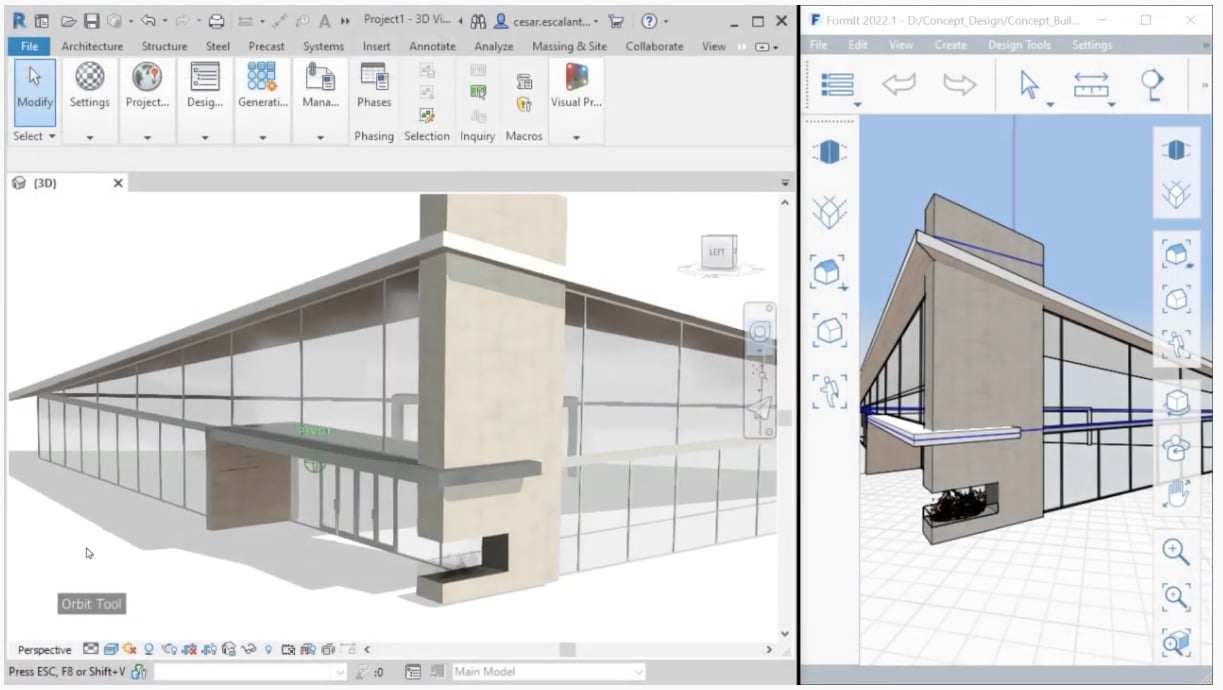


When you find yourself up against a wall, you have an exit strategy perhaps through SU. Heed the advice of the members here and take a Revit minded approach as much as possible. If a SU model is acceptable then it surely is acceptable to start simpler in Revit too?

So you could become more comfortable with Revit initially if you focus on drawing the forms you need and then tackle making things adjustable as a future goal. The difference is the User Interface, the dialog and work plane driven environment of Revit versus the draw planar profile/shape.push/pull nature of SU. TRY IT NOW Quick and easy to use, PlaceMaker saves time and money. PlaceMaker imports into Revit a variety of 3D data, aerial images and terrain. This Add-In has all the power of SketchUp PlaceMaker but now directly for Revit users. If you forgo SU.the truth is, if you forget parametric behavior, the process to create a solid in Revit practically the same as a "solid" in SU. We are excited to release PlaceMaker for Revit. In the meantime if using SU helps get the design sold and moving forward at a faster pace I don't see the harm. At some point the value you feel you get in doing it this way will probably erode and that will mean you are making progress toward a cleaner Revit focused workflow. If it needs changing you'll have to fix it in SU and repeat the process. You also won't be able to change the size of the component. You won't be able to control their appearance unless you are diligent about defining layers for each "part" of the SU component. To the OP (original poster), if you are "crazy fast" in SU then you can technically import components into Revit families.
Import sketchup to revit software#
It frequently puzzles me that people who can study, qualify for exams and get licensed to practice architecture or engineering struggle with software at all, but they do. Seldom is it a "I can't do it" proposition, people can do most anything they decide they really want to do. Either they won't or the firm won't "make them". I've encountered designers that are just not going to learn Revit. The Revit novice that's comfortable with SU has a different worldview than many of the people who hang out here. I refuse to use Revit (that companies arch and building design standard) as I believe it is (or was) the least intuitive CAD program available BUT the US side of the multi national won out over Archicad (not so bad but not SketchUp either).Ĭheers and Thanks from the socially & culturally isolated NW of Tas.Experienced Revit users see no point in SU because learning Revit for them isn't an issue anymore.

The team would take my Sketchup files and do what they needed to without complaining to me. I’ve just gone out on my own again after leading the local arch team for a large multi dip international. The majority of the architects they work with use either Revit or Archicad. I would like them to be comfortable working in 3D with me when that’s appropriate. The consultants are just starting with Revit so I want to establish protocols for future more complicated projects. dwg viewer and can load into SketchUp so I can look at but they should get before I send it. BIM Management, at the construction phase of project.įor this project my engineers will probably only be doing 2D overlays over 2D extractions of my work Thats not a problem. The above will help with the general coordination of models i.e. Hope that helps, as mentioned by MikeWayzovski the tips provided are dependent on phase of project. FBX export format from Sketchup imported into Navisworks does extremely really well. Do not import the model into Revit otherwise it will bring in all the line and object styles into Revit. "Link" or attach the file and relink model to check shared coordinates are working OK. So ensuring your coordinates are in the same place as the design team saves a lot of time later trying to move models into place using grids and levels. OR vice versa, Shared Coordinates is a big deal in Revit on a huge project. Have a grid referencing system in your model, so they can link your model where it is supposed to go and at the correct level. Helps the consultants order your information using native tools in Revit.īest file export option I have found so far from Sketchup to Revit is AutoCAD.dwg - There is a Sketchup importer in Revit I found does next to nothing. These can then be controlled easier through visibility setting in Revit. Order your Sketchup model in layers where possible to distill the information.
Import sketchup to revit full#
Import full model into Revit and Export to Navisworks for clash detection. Some stuff that has helped me, in the case of using your Sketchup model for model coordination.


 0 kommentar(er)
0 kommentar(er)
